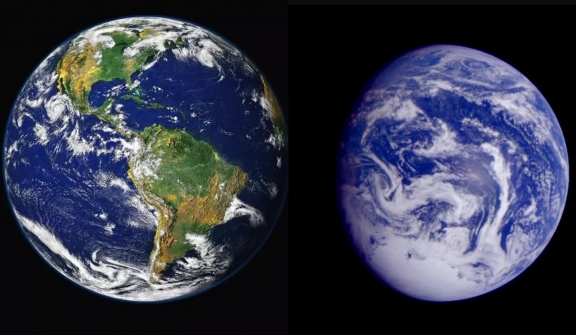
In a recent study, scientists have raised concerns about a remarkable phenomenon: the changing color of our planet.
The color of Earth has long been associated with various meanings and interpretations, with red signaling danger and green symbolizing vitality and abundance.
However, the shifting hues of our planet have prompted scientists to delve deeper into the underlying causes and potential consequences.

Despite the continuous increase in global temperatures, satellite data has shown a remarkable rise in green vegetation worldwide.
Both on land and in the oceans, there has been a notable proliferation of plant life.
The increase in greenery plays a crucial role in absorbing carbon dioxide (CO2) and reducing the negative impacts of climate change.
Referred to as "global greening," this phenomenon indicates that Earth's ecosystems are adjusting to the evolving environmental circumstances.

While the expansion of vegetation appears positive at first glance, it is important to recognize that this growth is not necessarily indicative of natural forest regeneration or ecosystem recovery.
The increase in vegetation is primarily attributed to human activities and their profound impact on Earth's landscape.
One key factor is the elevated levels of CO2, a byproduct of activities like burning fossil fuels.
Surprisingly, this excess CO2 acts as a fertilizer for plants, promoting their growth and contributing to the observed greening effect.

Therefore, human-induced activities have played a significant role in altering the face of the Earth and driving the proliferation of vegetation across the planet.
While the reasons behind the remarkable greening of land are relatively well understood, the same cannot be said for the oceans.
Scientists are currently grappling with uncertainty regarding the cause of the increased green coloration in marine areas.
They are unsure if the upsurge in green hues is due to a proliferation of phytoplankton, microscopic plant-like organisms that consume carbon dioxide (CO2), or if the phytoplankton themselves have undergone significant changes.

Resolving this question is extremely important, as it directly impacts the ocean's capacity to absorb and sequester carbon.
NASA is preparing to launch a new satellite dedicated to studying oceanic greening and its underlying mechanisms.




